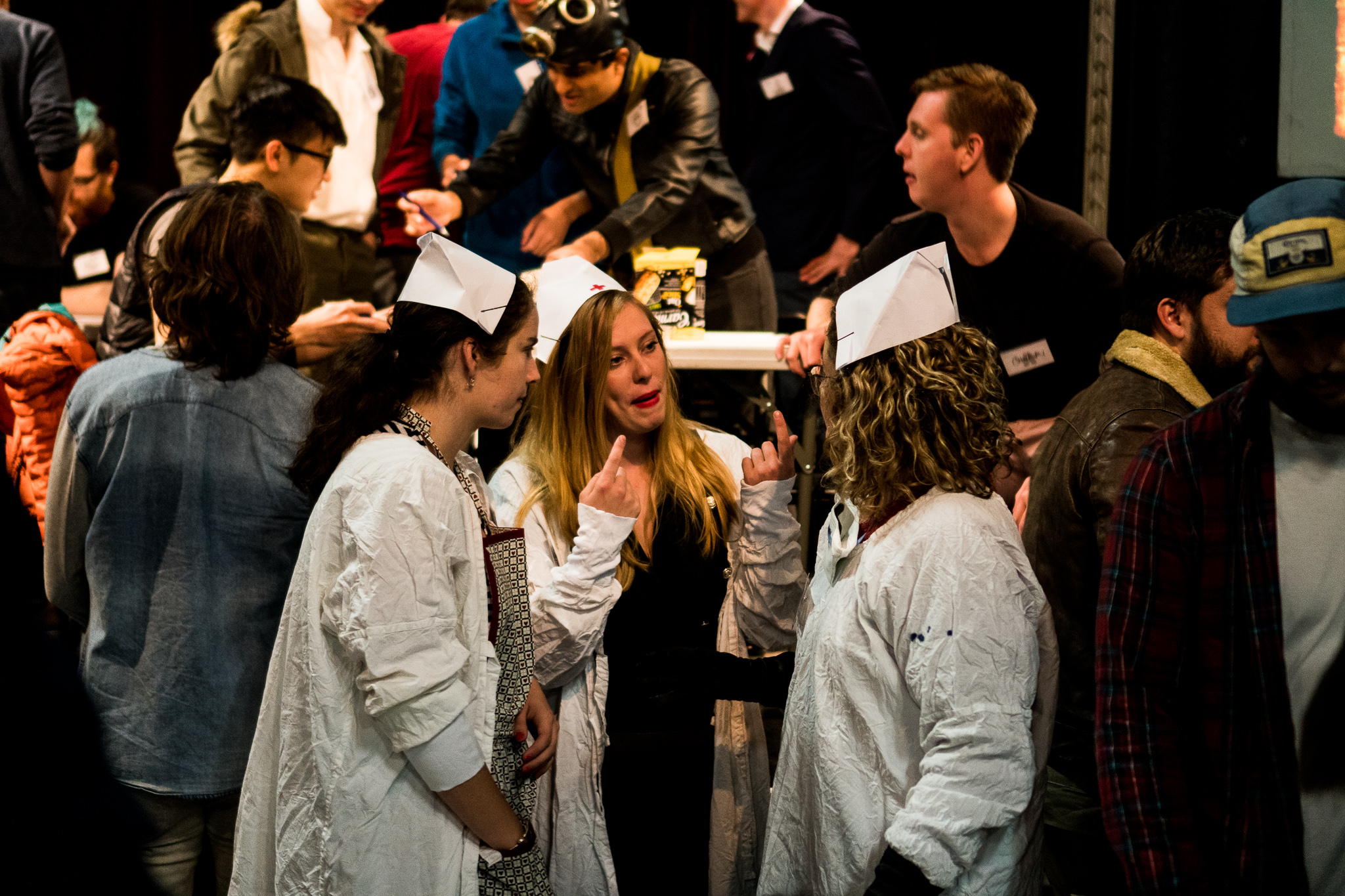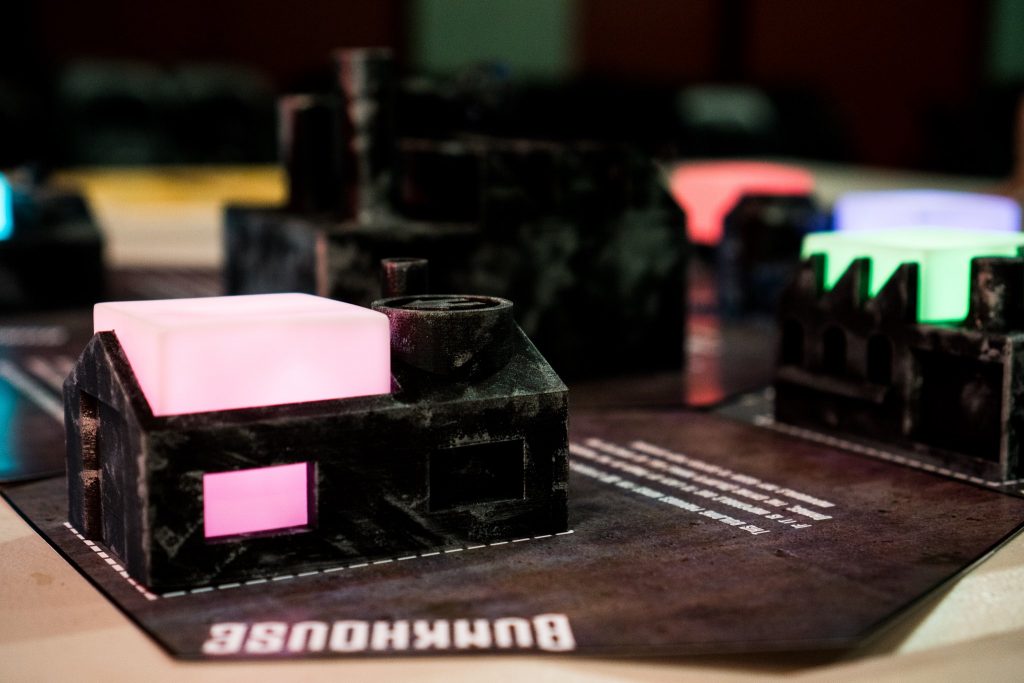It’s hard to believe that As the Fire Dies was seven weeks ago – it feels like a distant memory to me, a reoccurring feeling I get with these games after tireless months of planning come to their zenith in such a hectic and awe-inspiring day.
Having taken time to reflect on the game, the design, the event and the community, I’m now knee-deep in the machinations of my next project (For the Crown… more on this below) and thought it was time to take a breath and put some of your feedback into words. Nothing is more satisfying and insightful than receiving input from the players and seeing how my work was received – on that, I thank everyone who gave their thoughts after the game.
Up front, I wanted to give a few stats that I think are all quite positive and constructive, and also a testament to how AtFD reflects a more polished game than I’ve brought to life in the past.
Overview and Players
63% of players found out about AtFD through word of mouth and only 18% bought tickets due to having played in previous games. This is an amazing statistic and really drives home how the community is growing and changing as time passes.
Also surprising was that only 54% of players knew their team mates before the game began – this is easily a record for the Sydney Megagamers and is a clear by-product of the new faces we saw in April.
Of all the game features rated, those which received overwhelming positivity were no surprise – the game props! A huge thanks to James and Justin on this – the props were truly amazing.
On that point, we surveyed players on 13 different features of the game. Of these, 10 had overwhelming positive response (that they were excellent, or at least fit for purpose) – the other three had more consistent feedback of needing improvement. These three underdogs, unsurprising to anyone who played and sat in for the after-game debrief, were the team abilities, the loyalty system and the design of the event cards.
Now, let me pull some direct quotes from players to frame my thoughts below into the good and the not-so-much.

Frustrations and Grievances
Feedback on what players found annoying, confusing or downright frustrating was in line with the feedback on what needs to be refined in future games.
Players struggled with resourcing, understanding how loyalty worked and how it was tracked, and wasting time sitting around idle (both on expeditions or simply due to having no resources to work with). Admittedly, during design, playtest and the game itself, the management of abilities, resources and loyalty were points of uncertainty and risk. While I believe the design and moderation of AtFD dealt with these things in a far superior way than with previous games, there’s definitely room to improve.
Lack of communication and confusion, while immersive near the start of the game for some, also became a point of contention. More than in previous games, I feel, certain theatres of play in AtFD quickly became dominated by a small number of teams or players. Due to this, others not only struggled to understand what was happening, but also found it difficult to get involved.
Another key message that was recurring throughout the feedback and the after-event debrief was regarding the team abilities – they were too specific, too underpowered (or, sometimes, overpowered) or relied too heavily on the actions of others. Some, recognised during design, were at risk of never coming into play due to the way governance of the Colony was managed. This design work is a double-edged sword, reliant on how other parts of the game progress. Valuable feedback nonetheless.
Surprises and Highlights
When I went to the players for their feedback on what parts of the game they most enjoyed, as well as what parts of the event most caught them off guard, I was satisfied to see that the responses mostly aligned. The areas of design where we took some risks and tried to break expectations and preconceptions seemed to be a success, both surprising and being enjoyed by most of the players.
There was a lot of excitement generated by some of our more adventurous mechanics!
Further, my neurotic need to build in some kind of political bureaucracy seemed to really satisfy appetites, especially with the social commentary on power, democracy and elections.
Finally, and unsurprisingly, people also seemed to be surprised by the shift from a competitive environment to one that had cooperation at its foundation. Of course, this wasn’t necessarily the truth of the matter in practice – indeed, through its design, the game was meant to intrinsically challenge the idea of collaboration – but it was interesting to see players and teams devise different approaches to this seemingly foreign idea of ‘cooperation’.
Final Thoughts
Looking at the feedback received, reading the more in-depth analysis from some players, and hearing some of the excited post-game discussion at the pub back in April, I can summarise my feelings about the AtFD design and how it was received in a few points:
- Everyone wants something different. Regardless of the component of the game in question, I still haven’t found consensus – for every 5 star review there is a critique. Some of the most highly anticipated and rated components of AtFD (a good example being Expeditions) were labelled as both the most and least exciting part of the game by different players.
I think this is natural, and an outcome that should be expected from a diverse event that involves over 80 people, and it’s definitely in line with feedback from previous games.
- Taking design risks was worth it. There were many times during AtFD conception that I began to steer toward tried and tested mechanics and themes. It’s easy, after all, to apply a new coat of paint to something you know people will like (or, at least, understand). I was adamant about avoiding this trap and deliberately pursued some left-field ideas with AtFD (from the mini-games on expeditions to the fact the game ran in real-time, not turns).
By no means do I think all of these risks and out-of-the-box ideas paid off, but I learned a lot of valuable lessons and definitely picked up a few tricks for future designs.
- The players make it. More evident than ever before, given how (deliberately) light we made the player briefings, it’s clear that the community makes these games what they are. The stories told, the conflicts that rose to the surface, and the highlights of the day (from the politics to elections to the unsuspecting dodginess of the Merchant) are all the most important things to me – and none of them could happen without such a passionate and engaged community. I feel, dare I say, that I can do no wrong with these people behind me (touch wood)!
That’s it. My thoughts are done and, for now, the box is closed for AtFD. I’d love to revisit it in the future, for new and old audiences alive, perhaps with a few tweaks.
A huge, reiterated thanks to both my design team (James and Justin, who are – as you read! – onto their next project…) and my Moderator team (Alystra, Brendan, Gabby, Linda x2, Lindsay, Matt x2, Mitch, Phil and Stephen) – they did such an amazing job at handling the chaos and really added to the fact that, for the first time in my 5-game experience, I found myself with moments of solace!
As some may already be privy, game six for the Sydney Megagamers is already being designed – For the Crown, a brand new production, is coming later this year!
I’ll be tackling some classic themes with FtC, combining them with a few new (maybe ambitious?) ideas, and hope to share more info with you all very soon.
Meantime, I though it was worth rewarding those who managed to read through this essay with a few details that I’m happy to confirm about the game that is very much in its mature stages of design.
- The setting of FtC will be historical fiction, examining the politics of an 18th century continent that is reeling from having their long-reigning bloodline of monarchs suddenly cease.
- Teams will vary in size, dependent on the disposition of their faction in the world, with as many as six players to as few as two.
- There will be individual ‘characters’ that are unaligned to any faction, reminiscent of the Iron Sea.
- Players will have different titles, duties and abilities depending on their team of choice.
- The game will be turn-based.
- Players will interact with mechanics that govern combat, movement, territory control, worker placement, trade, formal diplomacy, construction/development, event resolution and espionage.
- The game will have approx. 50 players.
- The game will be run twice in succession, provided enough players show interest.
Stay tuned as more details fly over the coming months!
- Patrick

